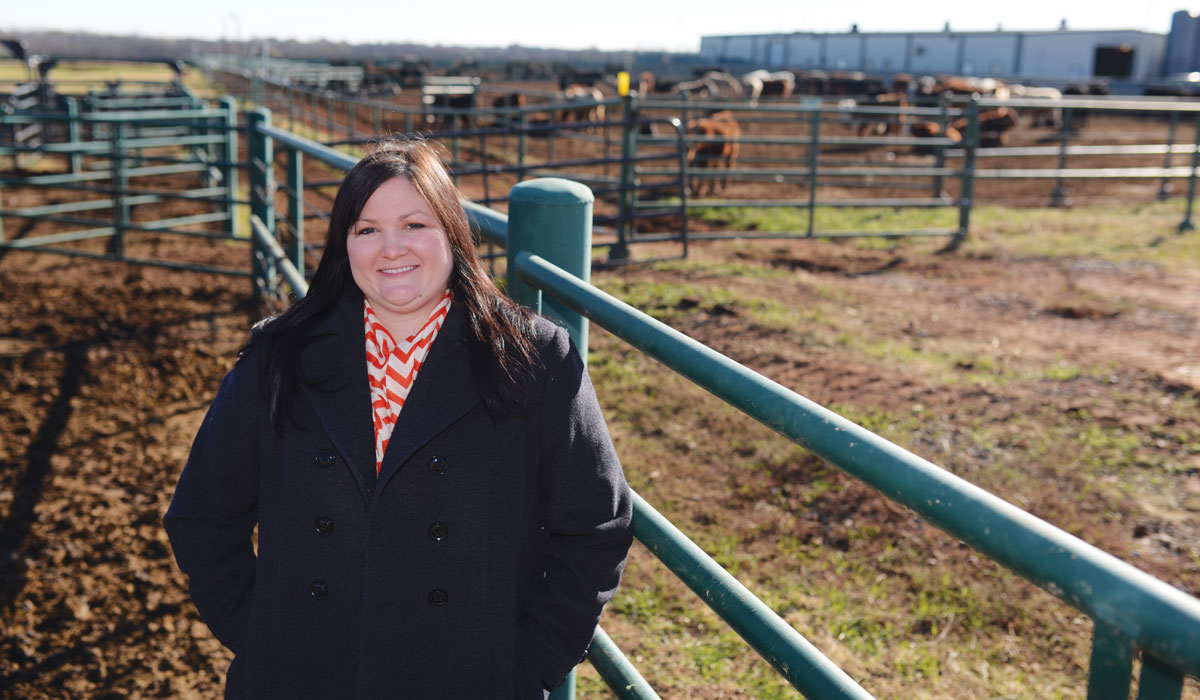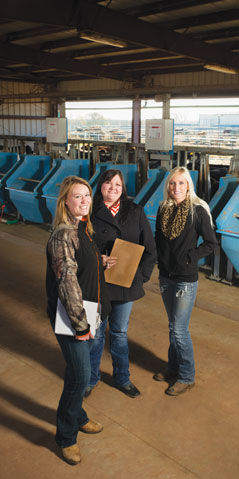Researching How to Raise Cattle with Less Water
Monday, November 9, 2015

Oklahoma State University is working to provide some of the first water-managementadaptation tools for beef producers, thanks to a $1 million grant from the U.S. Department of Agriculture’s National Institute of Food and Agriculture.
“The ultimate goal is to develop beef cattle and production systems that are more readily adaptable to the negative effects of drought,” says Megan Rolf, an assistant professor of animal science with OSU’s Division of Agricultural Sciences and Natural Resources who is the project’s principal investigator.
OSU research will focus on measuring water and feed intake on individual animals. Feed efficiency has been a popular focus among beef cattle researchers for years, but scientists have not focused much on cattle’s ability to manage water.
“Water efficiency is not a traditionally economically important trait, but water is becoming more important as we move into the future, not only because of drought but also increased competition for limited water resources,” Rolf says.
Although large-scale water-intake studies have not been performed on cattle because of technological limitations, similar research has been conducted with other animals in laboratory settings, and water intake was a heritable trait in those species.
“If these traits prove to be heritable in beef cattle, we can make selection decisions to improve an animal’s genetic merit,” Rolf says.
OSU’s Willard Sparks Beef Research Center is equipped with an Insentec system, which allows the collection of individual animal water intake in a pen setting. This technology makes possible the large-scale study of these traits in beef cattle in a normal feedlot environment.
The $1 million project is the first of its kind, focusing on the measurement of water-intake efficiency at the same time researchers are measuring feed efficiency on a large scale. Paired with extensive weather, genomic, animal health and animal behavioral data, this project will yield a powerful dataset with which to explore selection and management for adaptation to drought in beef cattle.
The potential benefits to the state economy are significant. More than half of agricultural cash receipts in Oklahoma are from cattle and calves, according to National Agricultural Statistics Service data.
“Oklahoma is the nation’s fifth-leading cattle-producing state and is one of the southern Great Plains states suffering through historic drought in recent years, underscoring the importance of research that enhances beef cattle production,” says Clint Krehbiel, co-principal investigator and research coordinator for the OSU Department of Animal Science. “Improving the quality of life for beef producers can have a significant positive effect on them and their families, and by extension, the communities where they live.”

Rolf agrees, adding that improved management tools are vital to allow beef producers to better manage operational risk and existing natural resources.
“An important aspect of this study is that scientists are taking research results and tying them directly into decision-support tools producers can use,” she says.
One of the primary outcomes of the project is the development of a water management tool, working in conjunction with the Oklahoma Mesonet, a world-class network of environmental monitoring stations designed and implemented by scientists at OSU and the University of Oklahoma. The system consists of more than 120 automated stations across the state, with at least one Mesonet station in each of Oklahoma’s 77 counties.
“Oklahoma beef producers already have access to a ‘cattle comfort index’ through the Mesonet system,” Rolf says. “This allows them to fine-tune operational management decisions related to animal well-being, and to essentially do so in real time, as well as forecast possible future concerns.”
A major objective of the project is to expand the “cattle comfort index” so the information provided is usable by beef producers no matter where they are in the nation. Longer term, the project scientists, along with the Oklahoma Mesonet, will focus on developing a water resource management tool.
“Given the world’s ever-increasing population, it is more important than ever to develop and promote beef production systems that are economically sustainable for both producers and consumers while also fostering environmental stewardship,” Krehbiel says.
NIFA made the award through its Agriculture and Food Research Initiative (AFRI) funding opportunity in the Climate Variability and Change challenge area. NIFA’s climate work is focused on reducing greenhouse gas emissions and increasing carbon sequestration in agricultural and forest production systems and preparing the nation’s agriculture and forests to adapt to changing climates.
AFRI is NIFA’s flagship competitive grant program, established under the 2008 Farm Bill, and supports work in six priority areas: plant health and production and plant products; animal health and production and animal products; food safety, nutrition and health; renewable energy, natural resources and environment; agriculture systems and technology; and agriculture economics and rural communities.
